#antitumor
Explore tagged Tumblr posts
Text
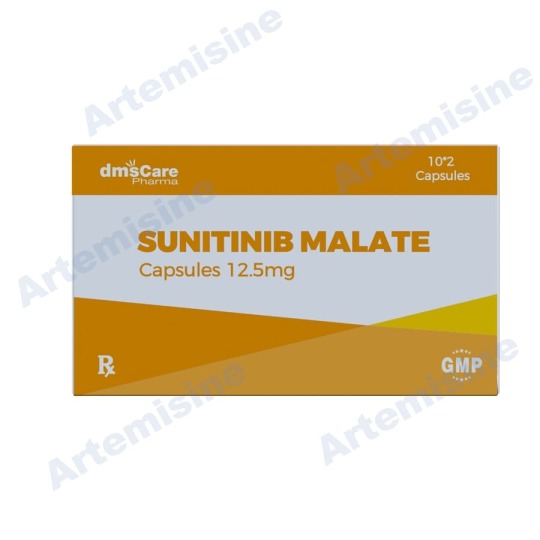
1 note
·
View note
Photo

A new study has found that inhibition of tumor intrinsic BANF1 activates antitumor immune responses via cGAS-STING and enhances the efficacy of PD-1 blockade. This is a promising development in the fight against cancer.
0 notes
Text
प्रियंगु I Callicarpa_macrophylla I Verbenaceae Analgesic Antipyretic Antitumor Diabetes Leucorrhoea
Safer-Effective-Better-Remedy
#प्रियंगु #Callicarpa_macrophylla #Verbenaceae #Analgesic #Antipyretic #Antitumor #Diabetes #Leucorrhoea #organic #fertilizer #nitrogen #CVDs #inflmmation #gastric_disturbances #hemorrhage #pitta_disorders #phosphorus #skincare #antiaging #antiwrinkle #biomedicine #diabetes #beta-carotene #soap ##healthylifestyle #money #flavonoids #antioxidants #aminoe_acids #proteins #diy #healthylifestyle…
youtube
View On WordPress
#Antitumor#Ayurveda#Callicarpa_macrophylla#diabetes#Herbal#Leucorrhoea#Medicinal plants#One health concept#Remedies#Unani#Verbenaceae#Youtube
0 notes
Text
youtube
#Functional nanoplatform#mechanotransduction#antitumor immunity#cellular forces#nanotechnology#tumor microenvironment#immune modulation#T-cell activation#cytokine production#biomechanical signaling#immune resistance#nanomedicine#precision oncology#targeted therapeutics#bioengineering#smart nanomaterials#cancer immunotherapy#advanced drug delivery#immune engineering#tumor mechanobiology.#Youtube
0 notes
Text
One thing about me is I will find the structure of the molecule you're talking about. And I will fantasize about it.
#i apologize to people who discussed their thesis after the guy who talked about withanolide#i heard 'antiinflammatory effects' and blacked out for the successive hour#and how we say grazie al cazzo there's no studies on how it affects athletes. it's an antitumoral drug.#and you absolutely can stuff a fluorine in there. btw. if you even care.
1 note
·
View note
Text
Traditional Chinese medicine shows potential in cancer treatment
Cancer remains a leading cause of death globally, with current treatments often resulting in significant side effects and resistance. Traditional Chinese medicine (TCM), particularly an herbal extract called Huaier, shows promise as an adjunct cancer therapy, boasting multitarget effects and minimal side effects. Huaier’s active polysaccharides have demonstrated antitumor properties, enhancing chemotherapy efficacy and reducing toxicity. While in-vitro and in-vivo studies highlight its potential across various cancer types, further research is required to clarify its mechanisms and validate its safety and efficacy in larger clinical trials.
#Traditional Chinese medicine (TCM)#Cancer treatment#Huaier herbal extract#Antitumor properties#Chemotherapy efficacy#Cancer resistance#Polysaccharides#Minimal side effects#In-vitro and in-vivo studies#Clinical trials
0 notes
Text
Also preserved in our archive
#mask up#public health#wear a mask#wear a respirator#pandemic#covid#still coviding#covid 19#sars cov 2#coronavirus
29 notes
·
View notes
Text
Chaga mushroom is a powerful anticancer, antitumor ally. Drink it in tea as a preventative! With all the toxins in our environment, and the cancer rates going up, we could all use some protection! If you know anyone who is battling cancer or has battled it before please share this valuable information.
#pay attention#educate yourselves#educate yourself#knowledge is power#reeducate yourself#reeducate yourselves#think for yourselves#think about it#think for yourself#do your homework#do some research#do your own research#ask yourself questions#question everything#healthy food#for your health#health tips#healthy living
94 notes
·
View notes
Text
African Treasure: The Story of Rooibos Tea
What do you prefer: tea, coffee? Maybe chicory? Wait, we know – rooibos! Did you guess it? Oh, even if not, TimeTea is sure that you will be interested in reading about where and how this amber-red drink comes from.
So, rooibos (or rooibos) is a herbal tea made from the shoots and leaves of a plant called aspalathus linearis. This specimen belongs to the Legume family and is a shrub up to 1.5 meters in height with small, needle-like leaves.

Aspalathus lineara in its natural form grows exclusively in South Africa – 200 km from Cape Town within the boundaries of the Cederberg mountain range. Today, of course, the plant is cultivated on an industrial scale, but still the plantations do not go beyond the Cederberg Valley. And all for the sake of a pleasant-tasting and energizing drink, which at one time replaced tea for local residents, and then for settlers from Europe.

The first to collect leaves and branches of Aspalatus lineara were the indigenous people – the Hottentot people. Only in the 18th century did the Dutch learn about the plant, and then – closer to the 19th century – the British also caught up. The fact of the “discovery” of rooibos for Europeans is attributed to Carl Peter Thunberg, a Swedish naturalist who was in South Africa on behalf of a Dutch company back in the 1700s. The drink was liked by sophisticated society, and at the beginning of the 20th century they began to export it with might and main. Today, the annual production of rooibos is about 12,000 tons, and half of this is exported.
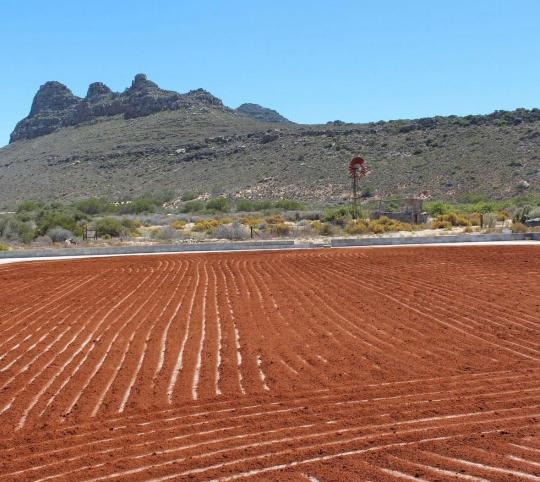
If you are already tired of coffee and tea or need/want to give up caffeine, rooibos is a great option. It quenches thirst well, tones up, is useful for both adults and children, and can also be drunk without sugar. This herbal tea itself contains a sufficient amount of glucose.

Ready! We’ll dry it and sell it. In addition, rooibos contains enough vitamin C, flavonoids, and a number of minerals. In particular, the flavonoid quercetin has antispasmodic, anti-inflammatory, antioxidant and antitumor properties. Some studies show the effectiveness of rooibos against mutagens, CNS damage and free radicals. Although we, of course, recommend that if something happens, contact doctors, and not tea sellers.
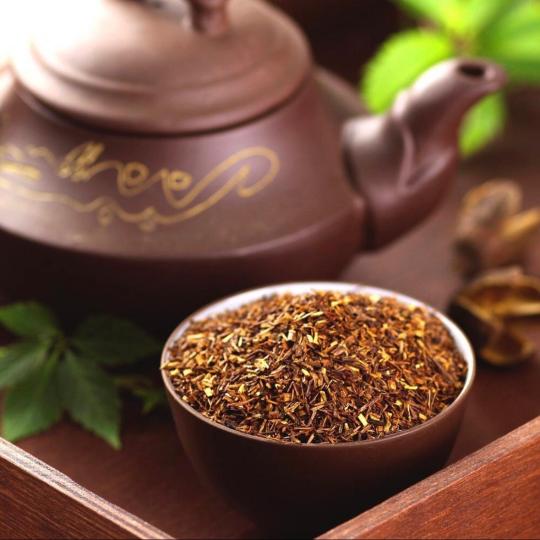
Today you can find this herbal tea in any form: loose, in bags, in pure form and with additives. They even make so-called espresso from rooibos. In general, be sure to try it if you haven’t already!
13 notes
·
View notes
Text
Essential Oils: Peppermint Mentha piperita

The following information is from Essential Oils for Beginners: The Guide to Get Started with Essential Oils and Aromatherapy by Althea Press.
DESCRIPTION Peppermint essential oil is an amazing medicinal with a very strong aroma. It is widely used in a number of commercially produced products, and it makes a fantastic addition to many aromatherapy blends. Peppermint essential oil is derived from the leaves of Mentha piperita. This plant is prolific and easy to cultivate, making peppermint essential oil one of the least expensive on the market. This essential oil has a thin consistency and is typically steam distilled. In aromatherapy, it is used as a top note.
ORIGIN Egypt, Hungary, United States
PROPERTIES Analgesic, antibacterial, anticarcinogenic, anti-inflammatory, antiparasitic, anti- spasmodic, antitumoral, antiviral, digestive
APPLICATION Peppermint essential oil should be diluted 50:50 with a carrier oil prior to use. It is suitable for direct inhalation, diffusion, topical application, and ingestion.
PRIMARY USES Soothes aches, pains, and itchy skin, including psoriasis and eczema; eases tension and headaches; soothes respiratory infections and asthma; relieves nausea and other digestive problems; combats viral and fungal infections, including cold Peppermint essential oil provides a wonderful cooling sensation due to the high level of menthol it contains, and when used in a body mist, it provides a fast cooldown. It makes an excellent liniment for relaxing horses ‘muscles, and when horses inhale it prior to a training session, they often focus better. Peppermint essential oil is useful in the creation of nontoxic household products. It is also an aphrodisiac, particularly when diffused. When used in aromatherapy, peppermint essential oil promotes greater mental focus and can help make learning new information easier. It is useful for calming the mind and easing fear. In meditation, this essential oil helps break down resistance concerning new situations; it is also useful for increasing intuitive awareness.
SAFE USE Conduct a patch test before using peppermint essential oil on your skin. It must be diluted prior to application; blend one part peppermint oil with one part carrier oil before using it in products that will come into contact with your skin. If you get peppermint oil in your eyes or on a cut, expect to feel a severe stinging sensation. Do not apply water, as this will only make the feeling intensify. Flushing the area with a carrier oil will provide relief. Children younger than six years old do not tolerate peppermint essential oil well. Anyone with high blood pressure should avoid contact or ingestion.
#green witchcraft#green witch#nature witchcraft#nature witch#cottage witch#pagan witch#pagan community#witch community#witchblr
77 notes
·
View notes
Text
Decoding the Pharmacological Symphony of Turkey Tail Mushroom: An In-Depth Analysis of its Chemical Composition, Immunomodulatory Mechanisms, and Implications in Cancer Therapeutics 🍄🔬
Salutations, esteemed Tumblr intellectuals! Brace yourselves for a cerebral sojourn into the pharmacological labyrinth of Turkey Tail Mushroom, an exploration that transcends the ordinary and delves into the intricate interplay of its chemical constituents, the sophisticated mechanisms of immunomodulation, and the far-reaching implications of its therapeutic potential in the intricate landscape of cancer biology. Prepare your minds for an expedition into the realms of molecular complexity, immune orchestration, and therapeutic promise. Grab your favorite scientific journal, a pen, and perhaps a lab coat, for this journey is not for the faint of intellectual heart. ☕📚
Chemical Symphony: An Elaborate Choreography of Bioactive Compounds:
In the molecular ballet of Turkey Tail, bioactive compounds are the principal dancers, each executing a meticulously choreographed routine. Polysaccharopeptides (PSPs), intricate glycoproteins with immunomodulatory acumen, command attention. Through the fine-tuned modulation of immune responses, these compounds stimulate various facets of the immune system, orchestrating an elaborate dance that amplifies the body's ability to recognize and eliminate neoplastic cells. Concurrently, beta-glucans, linear glucose polymers, contribute to this biochemical ballet by fine-tuning immune cell responses, enhancing the overall antitumor immune surveillance.
Navigating the Anti-Tumor Terrain: A Molecular Expedition:
Our scientific cartography navigates the expansive anti-tumor terrain mapped out by Turkey Tail's polysaccharides. The inhibitory effects on tumor growth and metastasis are akin to molecular fortifications against cancer progression. Through intricate mechanisms involving the activation of natural killer cells, cytotoxic T cells, and macrophages, Turkey Tail emerges as a sentinel, curbing the unchecked proliferation of malignant cells. Additionally, its antioxidative prowess, rooted in compounds like ergosterol peroxide, further shields cellular structures from oxidative stress, a nexus in carcinogenesis.
Immersive References: Nourishment for the Inquisitive Intellect:
1. Stamets, P. (2012). "Turkey Tail: Old Medicine, New Hope." Integrative Medicine: A Clinician's Journal, 11(1), 54–59.
- Stamets' exposé weaves a tapestry connecting ancient medicinal wisdom with contemporary insights, shedding light on Turkey Tail's multifaceted potential.
2. Wasser, S. P. (2011). "Current findings, future trends, and unsolved problems in studies of medicinal mushrooms." Applied Microbiology and Biotechnology, 89(5), 1323–1332.
- Wasser's comprehensive review acts as a meta-analysis, synthesizing the current knowledge landscape of medicinal mushrooms, positioning Turkey Tail within the broader discourse.
3. Sun, J. E., Ao, Z. H., Lu, Z. M., Xu, H. Y., Zhang, X. M., & Dou, W. F. (2002). "Antihyperglycemic and antilipidperoxidative effects of dry matter of culture broth of Inonotus obliquus in submerged culture on normal and alloxan-diabetes mice." Journal of Ethnopharmacology, 95(2-3), 285–292.
- In the realm of metabolic interactions, this study offers a glimpse into the potential implications of Turkey Tail compounds in managing hyperglycemia and lipid peroxidation.
4. Kidd, P. M. (2000). "The use of mushroom glucans and proteoglycans in cancer treatment." Alternative Medicine Review, 5(1), 4–27.
- Kidd's magnum opus serves as a compendium, dissecting the applications of mushroom-derived compounds in cancer therapeutics, providing a nuanced understanding.
Empowering the Community: A Call for Translational Excellence:
Knowledge is a potent elixir, yet its administration demands finesse. As we unlock the mysteries of Turkey Tail Mushroom, let us champion translational excellence, bridging the realms of bench and bedside. Always, without exception, seek the counsel of healthcare professionals, for personalized insights into the delicate interplay of molecular intricacies. Our collective journey extends beyond unraveling the pharmacological nuances; it's a clarion call to empower our community with the technical acumen to navigate the dynamic expanse of cancer research. 🌐💚

Your musings on this intricately detailed exploration are most welcome!
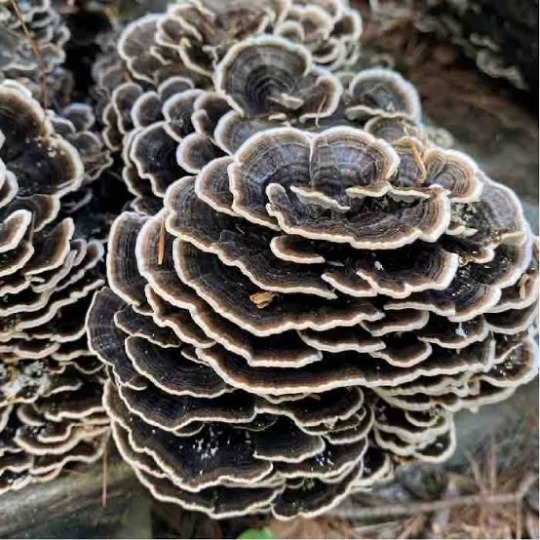
#science#biology#college#education#school#student#medicine#doctors#health#healthcare#mushrooms#turkey tail#chemistry#cancer#cancer treatment
26 notes
·
View notes
Text
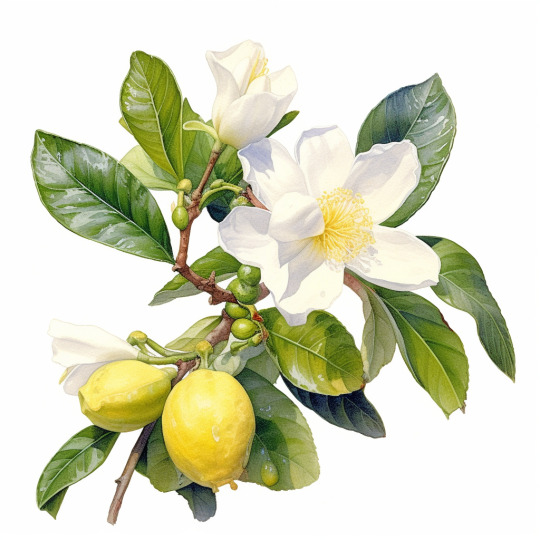
Gardenia
Also known as : Zhi Zi, Cape Jasmine
Scientific Name : Fructus Gardenia Jasinoides
Identification : An evergreen shrub with scented flowers and Orange fruit. Originally from the Southeastern provinces of China.
Properties : Abortifacient, Anti-cancer, Anti-hypoxic, Anti-inflammatory, Anit-mutagenic, Anti-oxidant, Anti-periodic, Anti-pryetic, Antiseptic, Antispasmodic, Antitumor, relaxant, staunches bleeding
Uses : depression, anxiety, insomnia, bleeding/bruises, cancer, skin cancer, headaches, cystitis, cramps and digestive issues
Try It : 6-12g of dry fruit taken will reduce altitude sickness taken for two day prior to flight.
Warnings : Do not take if suffering from diarrhoea, Use nothing but the Fruit.
Parts used: Fruit
Magic : Love, passion, used in poppets to attract others.
Planet : Moon
Element : Water
Deities : Isis, Diana, Morrigan, Luna, Sulis
Folklore and History: Under its original guise Zhi zi it has been a valued medicinal herb for over 2000 years. Within Chinese medicine it is considered a cooling herb. Hence used mainly for issues associated with heat (for example, Fever, Cystitis and irritability).
Plant Tips : Fruit is harvested when it turns a reddish-yellow colour.
For Refences and bibliography please Click here
21 notes
·
View notes
Text
as a disclaimer, not endorsing but sharing interesting reseach
2 notes
·
View notes
Text
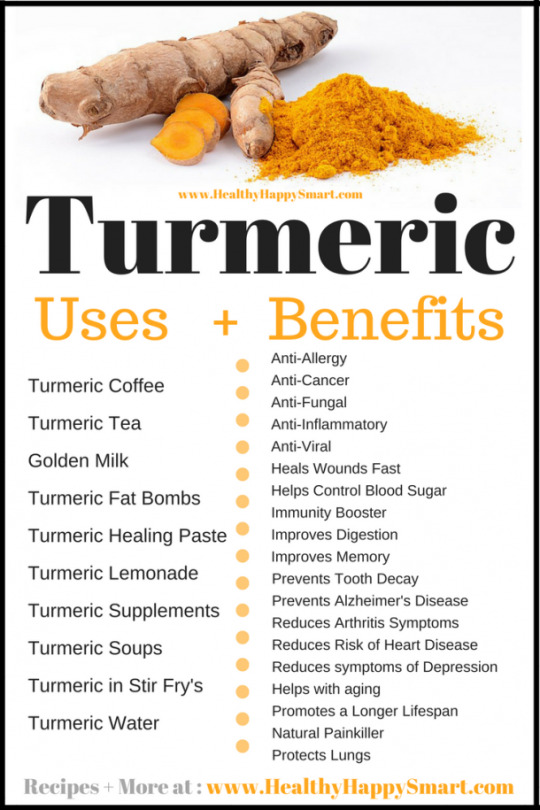
Put a half-teaspoon in each drink, soup, meal... (and 3-5 grams for acute pain)
The beneficial effects of turmeric are traditionally achieved through dietary consumption, even at low levels, over long periods of time. The activities of turmeric include antibacterial, antiviral, anti-inflammatory, antitumor, antioxidant, antiseptic, cardioprotective, hepatoprotective, nephroprotective, radioprotective, and digestive activities. Phytochemical analysis of turmeric has revealed a large number of compounds, including curcumin, volatile oil, and curcuminoids, which have been found to have potent pharmacological properties.
Turmeric is used as an herbal medicine for rheumatoid arthritis, chronic anterior uveitis, conjunctivitis, skin cancer, small pox, chicken pox, wound healing, urinary tract infections, and liver ailments (Dixit, Jain, and Joshi 1988). It is also used for digestive disorders; to reduce flatus, jaundice, menstrual difficulties, and colic; for abdominal pain and distension (Bundy et al. 2004); and for dyspeptic conditions including loss of appetite, postprandial feelings of fullness, and liver and gallbladder complaints. It has anti-inflammatory, choleretic, antimicrobial, and carminative actions (Mills and Bone 2000). The main clinical targets of turmeric are the digestive organs: in the intestine, for treatment of diseases such as familial adenomatous polyposis (Cruz-Correa et al. 2006); in the bowels, for treatment of inflammatory bowel disease (Hanai and Sugimoto 2009); and in the colon, for treatment of colon cancer (Naganuma et al. 2006). For arthritis, dosages of 8–60 g of fresh turmeric root three times daily have been recommended (Fetrow and Avila 1999). For dyspepsia, 1.3–3.0 g of turmeric root is recommended.
full artice: https://www.ncbi.nlm.nih.gov/books/NBK92752/
2 notes
·
View notes
Text









Araucaria heterophylla (synonym A. excelsa) is a species of conifer. As its vernacular name Norfolk Island pine (or Norfolk pine) implies, the tree is endemic to Norfolk Island, an external territory of Australia. It is sometimes called a star pine, Polynesian pine, triangle tree or living Christmas tree, due to its symmetrical shape as a sapling. Араукария разнолистная или Норфолкская сосна
araucaria: Named after the Araucanian indigenous people of Patagonia.
heterophylla: Varied leaves; from the Greek heteros and phullon
Clade:Gymnosperms
Division:Pinophyta
Class:Pinopsida
Order:Araucariales
Family:Araucariaceae
Genus:Araucaria
Section:A. sect. Eutacta
The first European known to have sighted Norfolk Island was Captain James Cook In 1774.
The tree is slow growing and can reach a height of 50–65 m. The scientific name heterophylla ("different leaves") derives from the variation in the leaves between young and adult plants.
Female cones are produced on trees older than 15 years and male cones on trees older than 40 years. Prolific seed fall occurs every 4-5 [years] and the seeds are a popular food source for the Green Parrot and introduced rats"
Araucaria heterophylla Salisb. is one of the important traditional plants for the treatment of toothache. Several pharmaceutical potentialities were described for the different extracts of A. heterophylla including antitumor, gastroprotection, anti-inflammation, antipyretic, and free radical scavenging. chemosystematic significance of this plant based upon the chemical composition of this oil was established along with the first description of its antioxidant and allelopathic potentialities.
934-942 Te Araroa Trail, Waiake, Auckland 0630
7QW2+MF5 Auckland
-36.7033690, 174.7512470
наземные растения, голосеменные деревья
4 notes
·
View notes